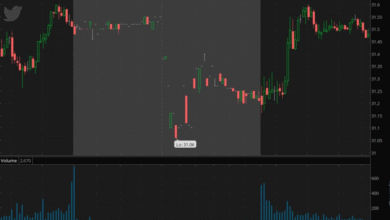Tether Stablecoin Expansion: New Plans for U.S. Market

Tether stablecoin expansion is poised to ignite waves of change within the cryptocurrency landscape as the largest stablecoin issuer seeks to establish a robust presence in the U.S. market. CEO Paolo Ardoino’s recent charm offensive in Washington emphasizes Tether’s commitment to complying with evolving cryptocurrency regulations, showcasing a dual focus on innovation and collaboration with law enforcement. With plans to launch a new U.S.-based dollar-pegged stablecoin by the end of this year, Tether aims to transform its image from one associated with controversy to a reputable partner in the financial ecosystem. This pivotal move aligns with the pro-crypto momentum gaining traction under the current administration, as Ardoino engages directly with lawmakers to pave the way for regulatory acceptance. As Tether eyes this crucial expansion, the potential implications for digital assets and law enforcement will undoubtedly shape the future of stablecoins in the United States.
The expansion of Tether’s influence in the stablecoin arena marks a significant shift in the dynamics of digital currencies and financial technology. Through proactive engagement in the legislative landscape, the company aims to launch a new dollar-backed cryptocurrency that complies with emerging guidelines and supports U.S. financial objectives. Paolo Ardoino’s recent interactions in Washington underscore Tether’s efforts to reposition itself as a credible player, particularly in light of increased scrutiny on cryptocurrency regulations. As this venture unfolds, it could redefine the intersection of legal frameworks and technological advancement in the realm of stablecoins and digital assets. The anticipated U.S. stablecoin launch may not only enhance Tether’s service offerings but also influence broader discussions regarding the role of cryptocurrencies in the modern financial system.
Tether’s Strategic Move to Expand in the U.S. Market
Tether is making headlines with its ambitious plans to introduce a U.S.-based stablecoin, a strategic move that reflects its commitment to thrive in an evolving cryptocurrency landscape. As the company positions itself to appeal to regulators and lawmakers, Tether’s CEO, Paolo Ardoino, emphasizes the importance of this new venture in light of recent shifts in cryptocurrency regulations. The proposed dollar-pegged stablecoin aims not just to cater to the growing demand for digital assets but to fundamentally alter the relationship between U.S. authorities and cryptocurrency issuers. This move could potentially set a precedent for how stablecoins are perceived and regulated in the future, especially as lawmakers look to harness the benefits of digital currencies.
With discussions surrounding the GENIUS Act, Tether is leveraging its reputation to align with pro-crypto initiatives that are gaining traction in Washington. The legislative landscape under the Trump administration presents opportunities for a more favorable environment for cryptocurrencies, allowing Tether to advocate for clearer guidelines. Ardoino’s proactive steps to engage with key lawmakers underscore the urgency of fostering a cooperative atmosphere, which could not only enhance Tether’s brand image but also lead to significant market expansion.
Tether Stablecoin Expansion: Opportunities and Challenges
The prospect of a new U.S. dollar-backed Tether stablecoin brings forth numerous opportunities for both the company and its stakeholders. Tether’s expansion into the U.S. market signifies a responsive strategy aimed at providing a stable digital asset for investors and consumers alike. As more individuals seek the safety and liquidity offered by stablecoins, Tether’s introduction of a domestic option could entice users who are hesitant to engage with international stablecoins. Furthermore, the backing of U.S. Treasuries enhances consumer confidence, positioning Tether as a safe harbor amidst the volatility common in the cryptocurrency market.
However, expanding into the U.S. market is not without its challenges. Tether faces scrutiny from regulators who are keen to ensure that cryptocurrency issuers adhere to transparent practices. The company’s history of regulatory issues, including concerns over its reserve disclosures, adds a layer of complexity to its expansion efforts. To navigate these challenges, Tether must prioritize compliance and transparency, clearly communicating its financial backing and operational intentions to dispel any concerns that lawmakers may have. Demonstrating robust financial health and a commitment to collaboration with law enforcement will be pivotal as Tether seeks to establish itself as a responsible player within the U.S. financial ecosystem.
The Role of Paolo Ardoino in Reinventing Tether
Paolo Ardoino, as CEO of Tether, is playing a crucial role in reshaping the company’s narrative, particularly through his frequent engagements in Washington. By actively participating in discussions regarding cryptocurrency regulations, he aims to fortify Tether’s position as a supportive entity alongside U.S. authorities. His charm offensive includes private meetings with influential lawmakers and public events that highlight Tether’s compliance and commitment to uphold legal standards. This strategic approach not only helps in building rapport with policymakers but also signals to both the industry and potential investors that Tether is earnest about its responsibilities.
Ardoino’s efforts also involve addressing concerns related to digital assets and law enforcement collaboration, which are central themes in the current regulatory climate. By presenting Tether as a partner that prioritizes security and collaboration, he strives to shift the narrative away from past allegations towards a more positive image. In a market increasingly influenced by legislative decisions, Ardoino’s approach may serve as a blueprint for other cryptocurrency issuers looking to align themselves with regulatory frameworks.
Legislative Implications of Tether’s U.S. Stablecoin
The introduction of Tether’s U.S. stablecoin is likely to have significant implications for cryptocurrency legislation moving forward. As anticipated under the potential framework established by laws such as the GOP-backed GENIUS Act, Tether’s willingness to cooperate with law enforcement sets a precursory standard that may influence how other issuers interact with regulators. The proposed legislation emphasizes the need for stablecoin issuers to engage with authorities, which may establish new norms for compliance across the industry. This evolution could ultimately dictate the operational landscape for not only Tether but the broader stablecoin market as well.
Moreover, the response from the market and regulatory bodies will be critical in shaping the final outcome of such legislative efforts. If Tether’s U.S. stablecoin succeeds, it could pave the way for a more defined regulatory framework that could include guidelines for transparency, reserves, and consumer protections. On the other hand, if scrutiny leads to stringent regulations that stifle innovation, Tether’s vision of expanding in the U.S. could face hurdles. The balance between fostering innovation and ensuring compliant practices remains a challenge that will need careful navigation as Tether seeks to enter the domestic market.
Trust and Transparency: Key Aspects of Tether’s Strategy
Trust and transparency are central to Tether’s strategy as it navigates its plans to launch a U.S. stablecoin. After facing skepticism and criticisms surrounding its reserve practices, Tether has made significant strides towards improving transparency by publishing regular attestation reports of its reserves. Ardoino’s emphasis on holding substantial amounts in U.S. Treasuries is aimed at reassuring both regulators and the market that Tether maintains a sound financial basis for its stablecoin. By prioritizing a transparent operational model, Tether seeks to differentiate itself from its competitors and rebuild trust among users and investors.
In addition, Tether’s commitment to compliance with cryptocurrency regulations paves the way for a reliable reputation that can attract more institutional investors and partners. As the digital assets market matures, the demand for transparency will likely intensify, and Tether’s proactive approach could position it as a leader amongst stablecoin issuers. By fostering a culture of openness and accountability, Tether sets a precedent that could influence the entire cryptocurrency marketplace, encouraging better practices across the industry.
Navigating Cryptocurrency Regulations in the U.S.
Tether’s anticipated U.S. expansion speaks volumes about its dedication to navigating the complex landscape of cryptocurrency regulations. As the world’s largest stablecoin issuer, Tether finds itself at the forefront of crucial discussions surrounding compliance and regulation in the cryptocurrency space. With Ardoino actively courting Washington, the message is clear: Tether seeks to not only conform to existing laws but actively participate in shaping future regulations that would govern digital assets. Involvement in legislative dialogues places Tether in a prime position to influence policies that align with the firm’s interests.
Furthermore, engaging with lawmakers provides Tether an opportunity to advocate for equitable regulations that support innovation while ensuring consumer protection. As the U.S. government increases its scrutiny of cryptocurrency operations, Tether’s efforts to maintain open lines of communication with authorities will be essential. This initiative could foster a better understanding of how stablecoins operate and underscore their value within the financial ecosystem, which is crucial in promoting a regulatory environment that is both conducive to growth and aligned with law enforcement objectives.
The Future of Stablecoins Related to Tether’s Developments
The future of stablecoins looks intricately linked to Tether’s developments, as its upcoming U.S. stablecoin could set the stage for a broader acceptance of digital currencies. As Tether continues to reinforce its position with strong reserves and compliance frameworks, it is likely to influence how the market perceives other stablecoin offerings. The anticipatory release of Tether’s U.S. dollar-pegged stablecoin not only showcases its ambition but may also serve as a benchmark for new entrants looking to navigate the cryptocurrency landscape effectively.
Moreover, as regulatory frameworks evolve and incorporate lessons from Tether’s launch, we may witness new opportunities arise for innovation within the stablecoin sector. If Tether succeeds in paving the way for a harmonious coexistence of cryptocurrencies within the traditional financial system, it could usher in a new era where digital assets play a crucial role in everyday transactions. The ripple effects of Tether’s strategies could thus redefine the future landscape of not only stablecoins but the entire cryptocurrency market.
Balancing Innovation with Regulatory Compliance
Tether’s ongoing developments highlight the critical balancing act between fostering innovation and adhering to cryptocurrency regulations. As the stablecoin industry is scrutinized more closely, Tether’s proactive position in engaging with U.S. lawmakers signals its commitment to compliance. This dedication showcases the potential for digital asset providers to innovate within a structured legal framework, maintaining consumer confidence while ensuring robust financial practices. The challenge lies in maintaining this balance without stifling the very innovation that drives the industry forward.
As Tether seeks to deploy its U.S. stablecoin, this balancing act will be paramount to its success. The ability to respond swiftly to regulatory changes while continuing to offer innovative solutions to users will dictate how Tether navigates future challenges. By being seen as both a compliant entity and an innovator, Tether can position itself as a trusted leader in the stablecoin market, potentially influencing how cryptocurrency regulations evolve across the industry.
Impacts of U.S. Stablecoin Launch on the Cryptocurrency Ecosystem
The launch of Tether’s U.S. stablecoin could have far-reaching effects on the broader cryptocurrency ecosystem. With Tether being a dominant player in the stablecoin sector, its move to launch domestically could alter market dynamics significantly. The introduction of a dollar-pegged stablecoin within the U.S. could encourage wider adoption of digital currencies among both consumers and institutional investors. Moreover, it could set a precedent for other cryptocurrencies aiming to establish themselves in the market, leading to an influx of new U.S.-based digital assets.
In addition, Tether’s successful adaptation to U.S. regulations may prompt other companies to follow suit, resulting in an era of increased legitimacy for stablecoins. This could lead to a more structured and stable environment for the entire cryptocurrency sector, encouraging innovations while ensuring that market participants comply with regulatory expectations. As this shift unfolds, Tether’s actions may very well spark a broader acceptance and understanding of cryptocurrencies, signaling a significant moment in the evolution of digital assets.
Frequently Asked Questions
What is Tether’s strategy for U.S. stablecoin expansion?
Tether is planning to launch a U.S.-based stablecoin, focusing on compliance with cryptocurrency regulations. CEO Paolo Ardoino emphasized that the new dollar-pegged stablecoin will align with impending legislation to ensure it meets legal standards and includes collaboration with law enforcement.
How does Tether aim to improve its image amid the U.S. stablecoin expansion?
Tether is working on rebranding itself as a partner to U.S. lawmakers and law enforcement. Ardoino’s recent efforts in Washington focus on demonstrating Tether’s commitment to transparency and compliance, especially in light of its past regulatory issues.
What role does Paolo Ardoino play in Tether’s U.S. expansion?
Paolo Ardoino, Tether’s CEO, is pivotal in the company’s U.S. stablecoin expansion strategy. His proactive engagement with U.S. lawmakers and private meetings in Washington reflect Tether’s efforts to foster positive relationships that could influence favorable cryptocurrency regulations.
Will the new Tether stablecoin differ from the current offerings?
Yes, Ardoino stated that the upcoming U.S. stablecoin would be different from Tether’s existing international stablecoin, primarily shaped by regulatory requirements and structured to comply with U.S. cryptocurrency regulations.
What potential challenges does Tether face in launching a U.S. stablecoin?
Tether’s challenges include gaining regulatory approval and addressing skepticism regarding its prior claims about reserves. The company must navigate rigorous compliance standards and demonstrate its ability to back its digital assets effectively amid scrutiny.
How is Tether preparing legally for its U.S. stablecoin launch?
Tether is emphasizing legal cooperation in its lobbying efforts. Ardoino highlights the company’s commitment to work closely with law enforcement and comply with laws to ensure a smooth launch of their U.S. stablecoin.
What significant reserves does Tether hold for its digital assets?
Tether reportedly holds approximately $120 billion in U.S. Treasuries, providing a solid backing for its digital assets. This reserve strategy aims to instill confidence among users and investors regarding the stability of Tether’s upcoming U.S. stablecoin.
How does Tether’s legal cooperation influence U.S. cryptocurrency regulations?
Tether’s legal cooperation might influence U.S. cryptocurrency regulations positively by establishing the company as a responsible player. As lawmakers consider the GENIUS Act, Tether’s engagement could lead to favorable conditions for stablecoin issuers in the U.S.
| Key Points | Details |
|---|---|
| Tether’s U.S. Expansion | Tether plans to launch a U.S.-based stablecoin as early as this year. |
| CEO’s Initiatives | CEO Paolo Ardoino has actively engaged with lawmakers in Washington to garner support for Tether’s plans. |
| Legislative Influence | Tether aims to influence upcoming legislation, particularly the GOP-backed GENIUS Act, which may favor foreign issuers. |
| Partnership with Law Enforcement | Tether emphasizes cooperation with law enforcement as a key aspect of its business model. |
| Assets and Reserves | Tether claims to be well-capitalized, holding $120 billion in U.S. Treasuries and having $7 billion in excess equity. |
| Recent Auditing Reports | Recent audits confirm that Tether’s assets exceed liabilities by approximately $5.6 billion. |
| Criticism and Concerns | Despite its reassurances, there remain concerns regarding Tether’s past regulatory issues and its partnership choices. |
Summary
Tether stablecoin expansion is on the horizon as the company looks to establish a presence in the U.S. market with a new dollar-pegged stablecoin. The initiatives led by CEO Paolo Ardoino in Washington are a strategic move to gain legitimacy and build relationships with lawmakers, especially in light of pro-crypto sentiment. With a focus on law enforcement cooperation and substantial reserves, Tether aims to address past criticisms while positioning itself as a key player in the future of stablecoins in the U.S.




